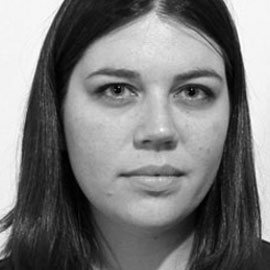By guest writer: Jen Ignacz
(This post originally appeared on the Topp blog)
As a UX researcher, I have found out over the years that there are far fewer qualitative researchers than quantitative researchers in the business world. This makes sense based on the ratio of qualitative and quantitative research conducted in businesses; according to ESOMAR Global Market Research Annual Reports the last several years, between 75% and 85% of global research has been quantitative year after year – but the truth isn’t always in numbers.
At Topp we dig a bit deeper. The majority of research we conduct is qualitative, which is an important process in understanding underlying reasons, opinions, and motivations of people early in the design and development process. Qualitative research and exploration provides insights into problems and helps to catalyse design ideas or hypotheses. We see qualitative research as a compliment to the quantitative research most of our clients already have – where quantitative research is really good at answering WHAT, qualitative is best at answering WHY.
So when I came across the conference, Qual360 (run across 3 continents), just for qualitative research with applications to business, I was beyond thrilled and hopeful that I would find others like me. The purpose of the conference is to bring together qualitative researchers to discuss innovation and advancements in the qualitative research practice.
I observed three themes in the topics being discussed both on and off stage:
There’s a shift happening with what type of research senior leaders are asking for. Both the agencies and the clients attending the conference talked about how qualitative research is being sought after by high level executives to inform and inspire business strategy more than even before.
The discussions suggested this shift is happening for a few reasons:
In general, there was a buzz of excitement about being on the cusp of a major uptake of qualitative research demands from strategic leadership.
There’s been an explosion of digital tools focused on different types and parts of qualitative research.
There are tools
There was a call to the industry to go beyond being order fillers of research – to innovate on the way we work. Clients dared agencies to challenge research briefs when there was clearly a better way to tackle the problem being described. Agencies dared clients to let the researchers into the post-research process of applying the results and consulting through the entire lifecycle of a product or service. There was a request for everyone having touchpoint with research to be more critical thinkers about what, why, and how we conduct research.
Fortunately, Topp is already answering this call! Since bringing Research to Topp, a guiding principle has been to ensure it’s integrated into the design process. Topp is a design agency that conducts research, not a research agency that does design. So any research we conduct has to have a clear path to impact the solution we design. There were a few tips and tricks I learned that I will be applying in the near future to ensure not only Topp designers, but also the clients we work with become more engaged with the research.
 Jen Ignacz leads Topp’s User Experience research practice. She studied Mathematics and Psychology and discovered her love of qualitative Design Research because of a university internship program. Originally from Canada, she relocated to Sweden in 2011 for a job opportunity. Her favourite part of being a researcher is contributing to the definition and creation of meaningful products and services that people really want and need. If you want to discuss the impact of UX research in the design process, contact her at jen@topp.se
Jen Ignacz leads Topp’s User Experience research practice. She studied Mathematics and Psychology and discovered her love of qualitative Design Research because of a university internship program. Originally from Canada, she relocated to Sweden in 2011 for a job opportunity. Her favourite part of being a researcher is contributing to the definition and creation of meaningful products and services that people really want and need. If you want to discuss the impact of UX research in the design process, contact her at jen@topp.se
ESOMAR Global Market Research 2012: https://rwconnect.esomar.org/a-world-of-difference-esomar-global-market-research-2012/